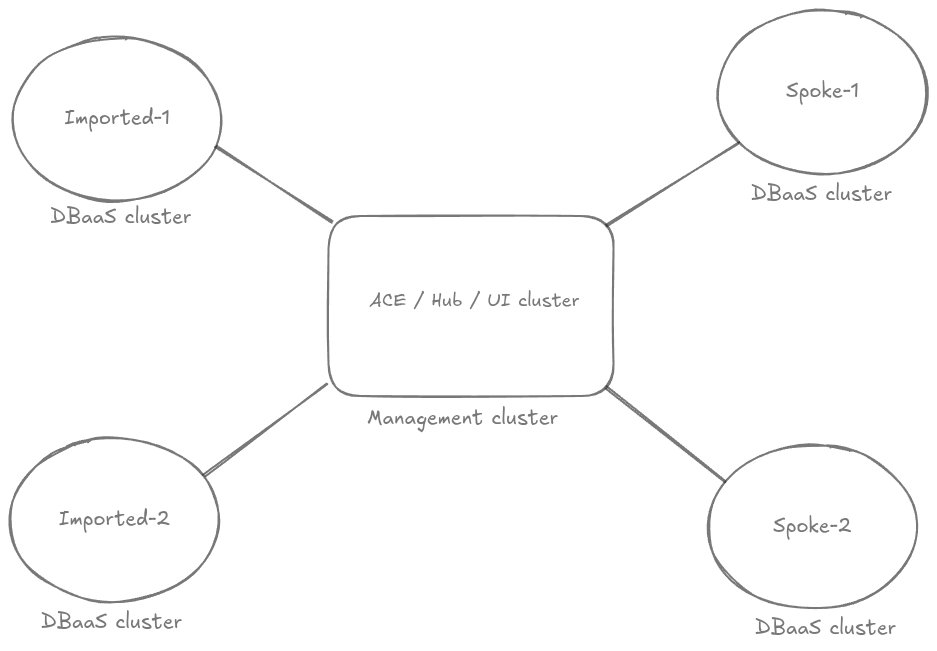Architecture
Let's first discuss some basic terminologies, those will be repeated many times throughout the whole docs. The below picture will help in describing the terminologies:

ACE
ACE is the central management cluster where we will deploy all the ui-components. Namely the backend server(ace-platform-api), kubedb-ui, cluster-ui, billing-ui, platform-ui, grafana-ui, ingresses etc. This will be mainly used by the administrators & devops engineers. As this is the central point of management, we call it Management cluster. As all the UI-components installed in this, we sometimes call UI cluster.
We also have native-integration of OCM hub-spoke model. This is by-default enabled. This integration enables the cluster-manager to easily do similar changes(for example: installing a feature) centrally. ACE is used as the hub of OCM mode. Thats why we call this Hub cluster too.
The ACE cluster can be a single-node k3s cluster for staging or development. Or a full-fledged multi-node cluster for prod.
The installer page on the selfhost-ui on appscode.com provides instructions for quickly setting up a K3s cluster to get started immediately.
DBaaS
DBaaS cluster is the main cluster for database users. This can be of two main type: spoke cluster, general imported cluster. While importing, if someone make it a spoke, then cluster-manager-spoke features will be installed by the Hub cluster. If you don't want to manage it from the hub, we can just import it as a general cluster. In that case, that auto-sync from hub will not happen.
Both ACE & DBaaS clusters can be of any vendors like AWS, Azure, Google Cloud etc. It can be an on-prem cluster too.



